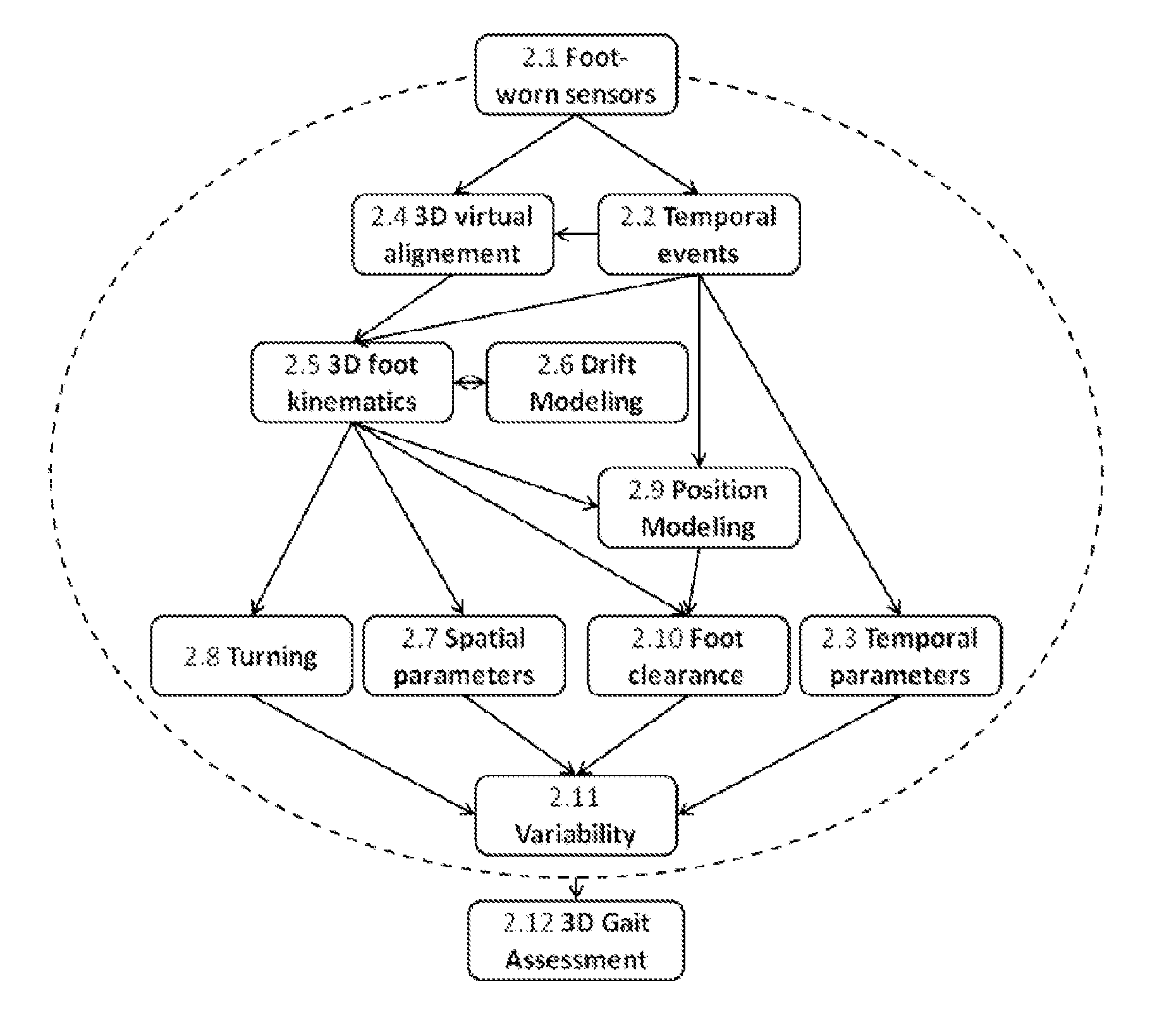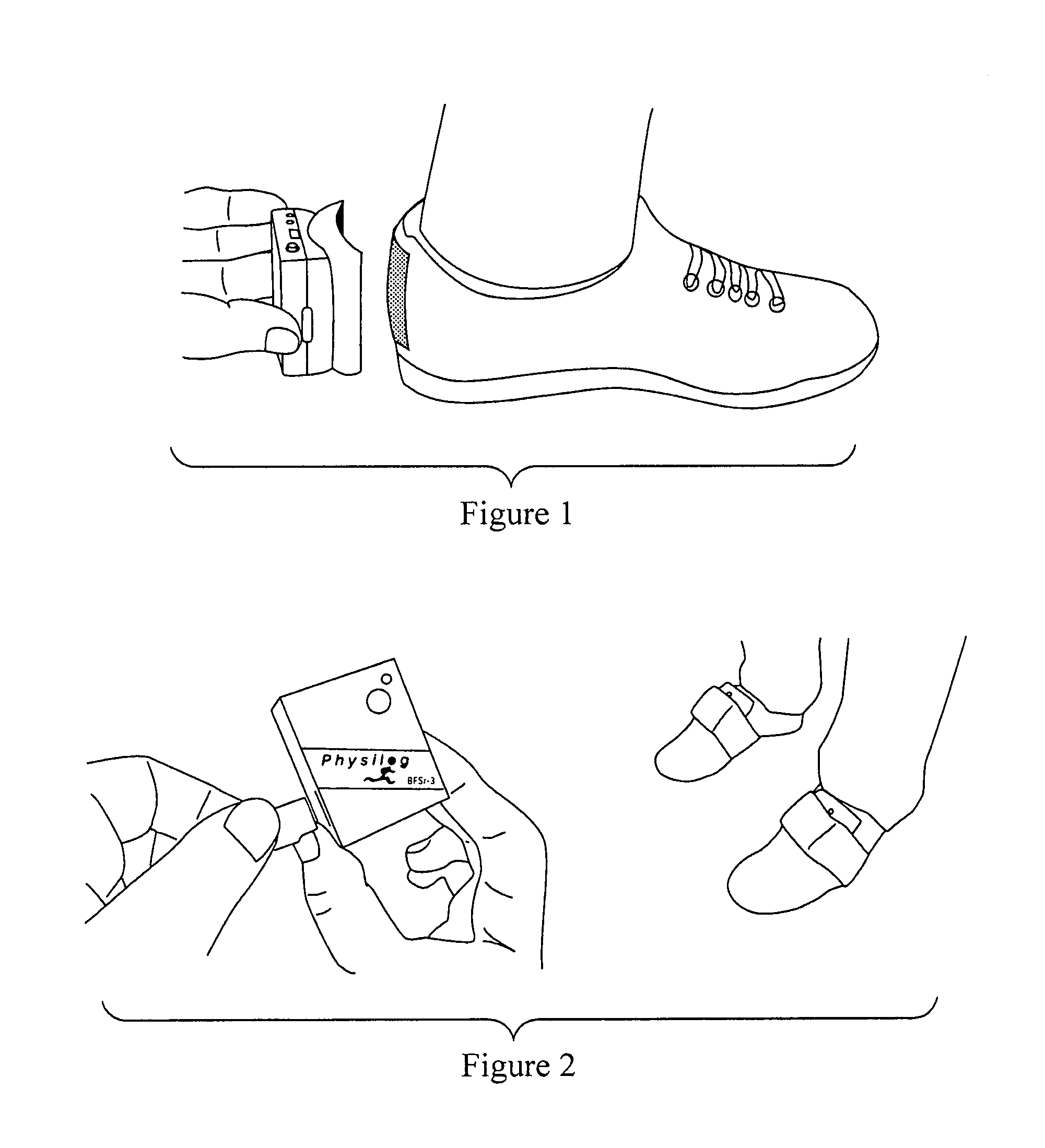System and method for 3D gait assessment
a technology of spatio-temporal parameters and assessment methods, applied in the field of assessment of gait, can solve the problems of limiting position and orientation assessment during long-term measurements, limiting the evaluation of specific spatio-temporal gait parameters, and both studies were restricted to analysis, so as to achieve precise and accurate assessment of 3d gait spatio-temporal parameters
- Summary
- Abstract
- Description
- Claims
- Application Information
AI Technical Summary
Benefits of technology
Problems solved by technology
Method used
Image
Examples
Embodiment Construction
[0017]The invention will be better understood below by way of non-limitative examples and the following figures:
[0018]FIG. 1—S-Sense module with compliant foam attached with Velcro to hind part of shoe
[0019]FIG. 2—“Physilog 3” Foot-worn sensors featuring 6DIMU and its fixation to user's shoes on forefoot
[0020]FIG. 3—The inertial signals and the temporal events for one typical gait cycle and corresponding events. Inertial signals re scaled to be depicted together in one graph.
[0021]FIG. 4—Temporal phases
[0022]FIG. 5—Block Diagram of 3D Gait Analysis Algorithm
[0023]FIG. 6—De-drifted integration of vertical acceleration (A) to obtain vertical velocity (V) using linear function versus p-chip interpolation function (PIF)
[0024]FIG. 7—3D Gait parameters estimation from 3D foot position (P) and azimuth (θ): Stride Length (SL), Stride Velocity (SV), Foot clearance (FC) and Turning Angle (TA).
[0025]FIG. 8—Sensor relative position to heel and toes
PUM
 Login to View More
Login to View More Abstract
Description
Claims
Application Information
 Login to View More
Login to View More - R&D
- Intellectual Property
- Life Sciences
- Materials
- Tech Scout
- Unparalleled Data Quality
- Higher Quality Content
- 60% Fewer Hallucinations
Browse by: Latest US Patents, China's latest patents, Technical Efficacy Thesaurus, Application Domain, Technology Topic, Popular Technical Reports.
© 2025 PatSnap. All rights reserved.Legal|Privacy policy|Modern Slavery Act Transparency Statement|Sitemap|About US| Contact US: help@patsnap.com



